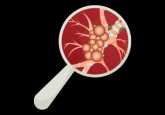A new way to decellularized organs

Researchers adapted a tumor ablation technique to generate a decellulularized zone in an organ. This region can serve as a tissue scaffold for engrafting exogenous cells.

The persistent shortage of organs for transplants prompted efforts to create artificial organs through tissue engineering using 3-D tissue scaffolds for growing exogenous cells. A promising approach for producing tissue scaffolds is whole-organ decellularization, which results in a scaffold containing native extracellular matrix (ECM) and an intact microvasculature, ideal for growing an artificial organ.
In the May issue of BioTechniques, Tammy Chang from the University of California, San Francisco and colleagues describe a new approach for decellularizing an organ in vivo that leaves an ECM scaffold suitable for grafting exogenous cells. The researchers used non-thermal irreversible electroporation (NTIRE), a tissue and tumor ablation technique involving the application of very brief, high electric field pulses, to irreversibly permeabilize cell membranes, causing cell death without scar tissue formation.
Chang and her team treated part of the liver in a live mouse with NTIRE and then implanted exogenous hepatocytes into the cell-ablated region, resulting in the subsequent integration of the implanted cells into the host liver parenchyma.





